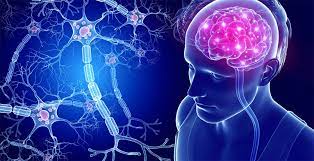Epilepsy, often known as seizure disorder, is a noncommunicable brain disease that can severely affect a patient’s daily life. This neurological illness affects around 50 million people worldwide, making it severe. However, unlike other brain disorders, the right drugs and other forms of treatment may be effective for epilepsy.
Even though there is no precise cure, antiseizure medications have turned the disease into a chronic but well-managed condition for many people, to the point that it no longer interferes with their lives. Unfortunately, around a third of cases are not so fortunate. Antiseizure medications rarely work for them, so they seek other treatment options.
In this regard, we have explained some of the latest Epilepsy treatment options available. According to their health condition, patients can choose one specific treatment and proceed further to getting cured.
Important Facts Related to Epilepsy and its Treatment
One can manage seizures. With the proper utilization of antiseizure medications, up to 70% of patients with epilepsy can go seizure-free. After two years without seizures, the patient can discontinue antiseizure medicines taking into account relevant clinical, social, and personal aspects. The two most consistent indicators of seizure recurrence are a confirmed etiology of the seizure and an abnormal electroencephalography (EEG) pattern.
- Around three-quarters of patients with epilepsy in low-income countries cannot get proper medication as needed. This condition is generally called the “treatment gap.”
- Antiseizure medication is in short supply in many nations. According to a recent study, the average availability of generic antiseizure drugs in low- and middle-income nations’ public sectors is less than 50%.
- Most patients with epilepsy can be diagnosed and treated without using delicate equipment at the primary healthcare level.
- Training primary healthcare workers to diagnose and treat epilepsy can successfully close the epilepsy treatment gap. In addition, patients who may not respond well to pharmacological therapies may benefit from surgery.
Latest Epilepsy Treatment Options
Brain surgery
Laser surgery is the latest and proven procedure that uses heat to destroy the seizure focus rather than remove it. This method is less invasive and is especially beneficial for seizures caused by deep structures in the brain. “Disconnections,” in which the seizure focus is not eliminated but somewhat surgically prevented from spreading to other parts of the brain, are another type of surgery.
The most effective way to stop seizures is to remove the seizure focus from the brain. Therefore, we must first locate the seizure focal and ensure that it can be safely removed.
DBS- Deep brain stimulations
DBS is similar to RNS, but the electrodes are implanted in the thalamus, a deep brain region. It has been demonstrated to be helpful in the treatment of focal seizures, which occur in one specific area of the brain. It regularly stimulates rather than only when a seizure begins, as RNS does. Instead, the stimulation occurs within the brain itself. In addition, unlike RNS, it is not necessary to pinpoint the exact location where the seizure begins.
RNS- Responsive neurostimulation
The patient may require intracranial neurostimulation if epileptic seizures occur from one specific brain region and cannot prevent with drugs or other therapies.
The first step is to pinpoint the source of the seizures, also known as the seizure focus. It can sometimes be done by employing video-EEG to record patients’ seizures with electrodes on the scalp. However, we frequently need to hire intracranial electrodes to pinpoint the exact position of the seizure focal.
Immunotherapy
Epilepsy is sometimes caused by the immune system attacking the brain. Autoimmune epilepsy is a type of epilepsy that cannot be treated with antiseizure drugs alone.
Antibodies that attack brain areas are typically produced in the body, and these antibodies can be detected through a blood test. Although some patients experience autoimmune epilepsy, no antibody has yet been found.
There are several treatment options available, including:
- Steroids at high doses
- Using veins to provide a collection of human antibodies
- Plasma exchange for removing disease-causing antibodies from the blood
- Other drugs that reduce the immune system’s overactivity
FDA-approved medications
The mainstay of epilepsy treatment is medications that have been studied in rigorous scientific trials. However, we must first confirm that a person has epilepsy before beginning treatment. Up to 10% of people will have an epileptic seizure at some point in their lives. They do not, however, always have epilepsy. A person might experience a seizure due to taking certain medications, for example. However, that would be a one-time occurrence and not indicative of epilepsy. Epilepsy is a neurological condition that produces uncontrollable and repeated seizures.
Conclusion
The goal is to reduce seizures while avoiding any side effects that could endanger the patient’s quality of life or safety. The process can be complicated at times, but the patient should be entirely motivated. We hope that the evolving technology will bring other treatments which will get approval and prove helpful. It’s recommended that people discuss more with their neurologist to discuss the latest Epilepsy treatment plan that is right for them.





